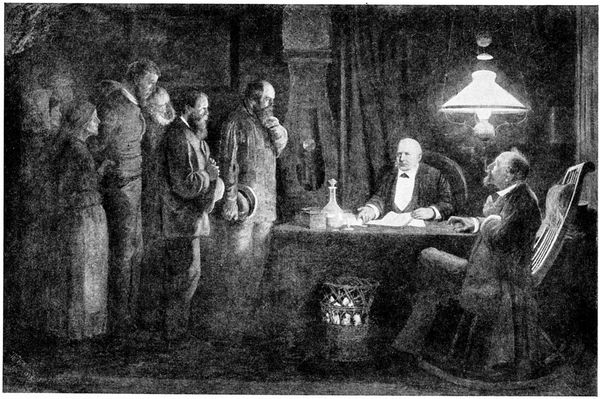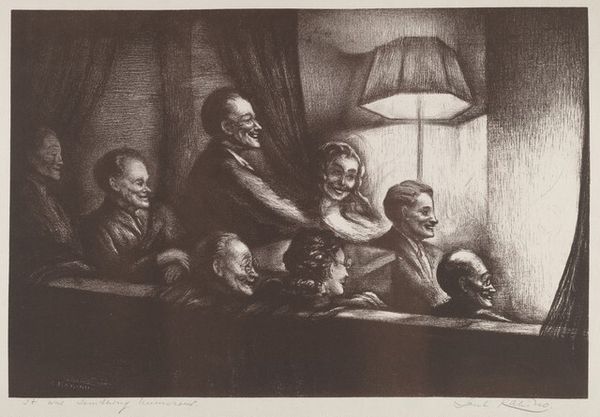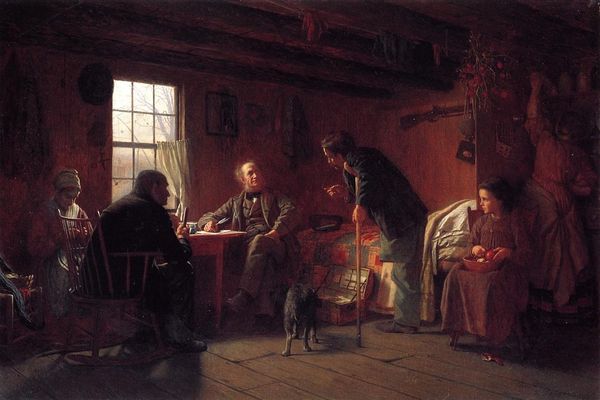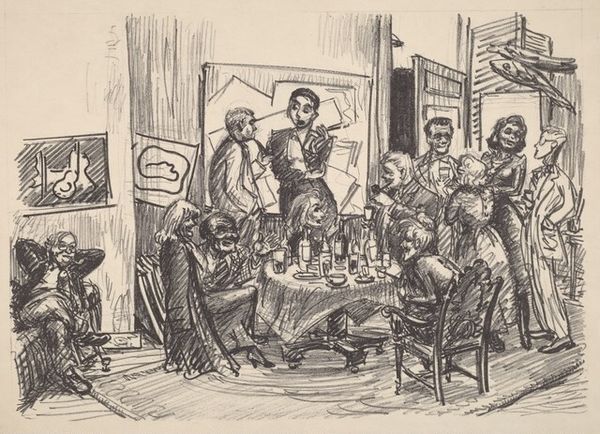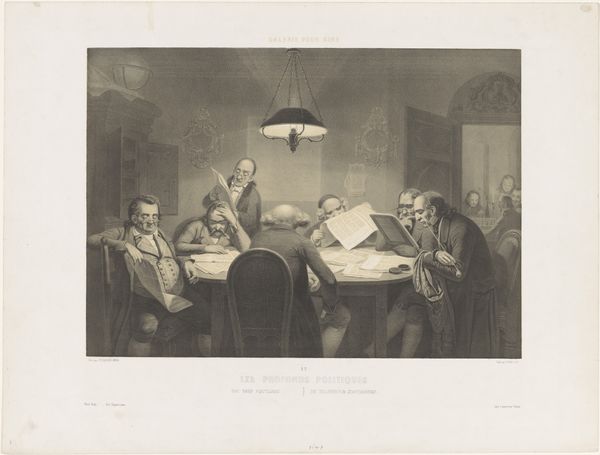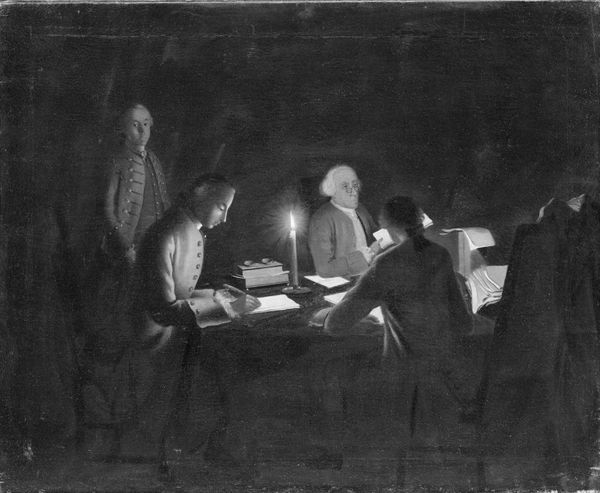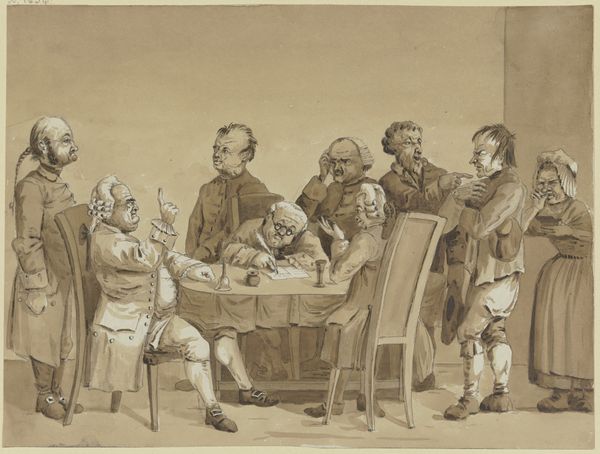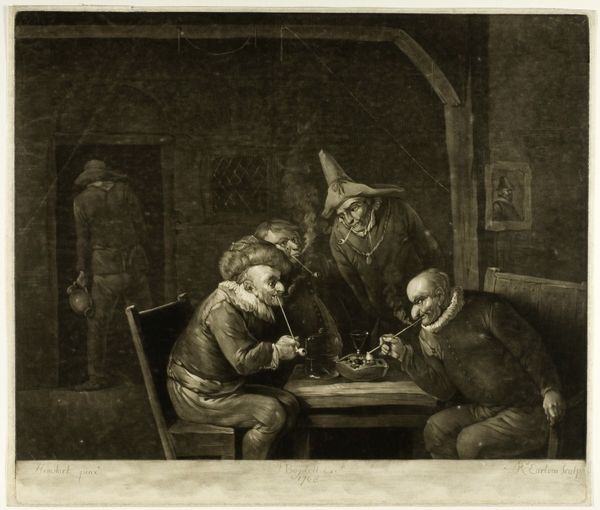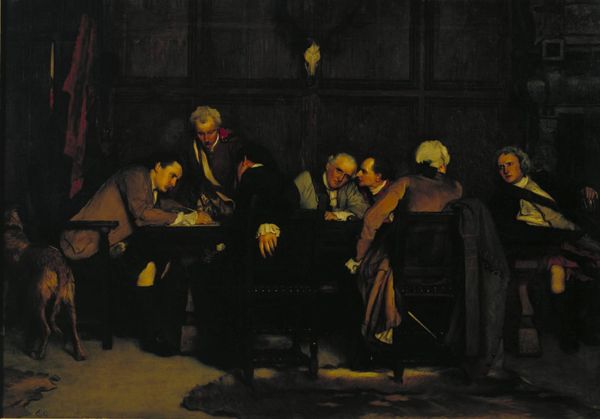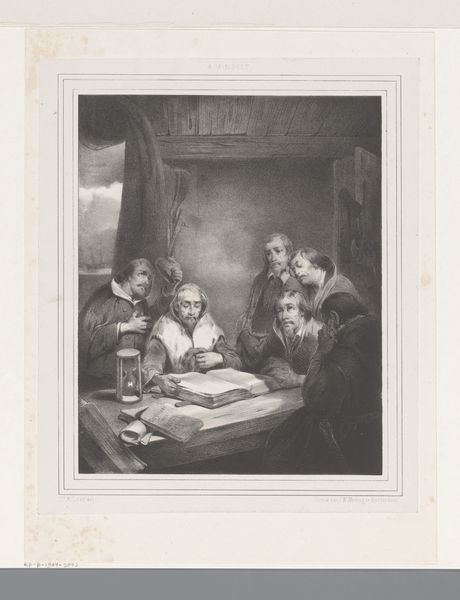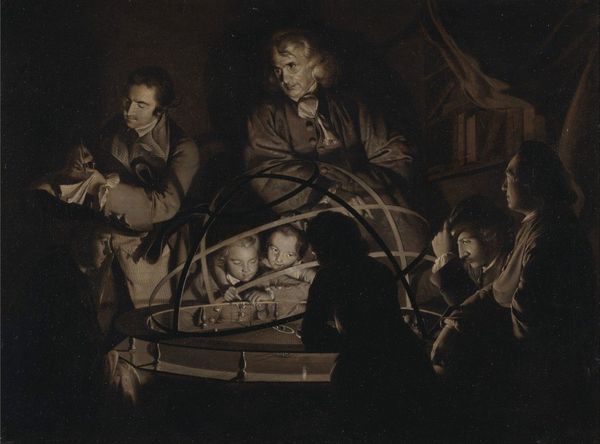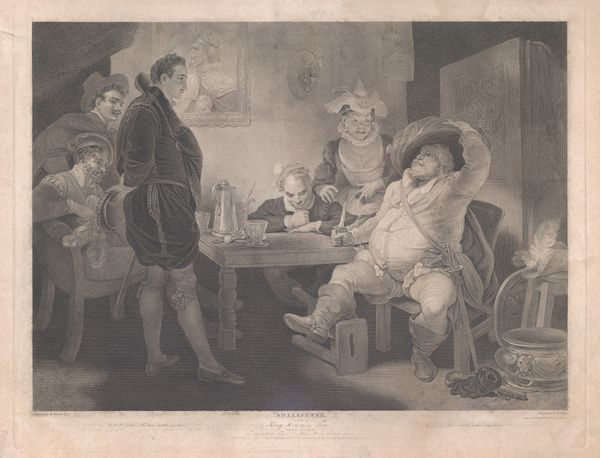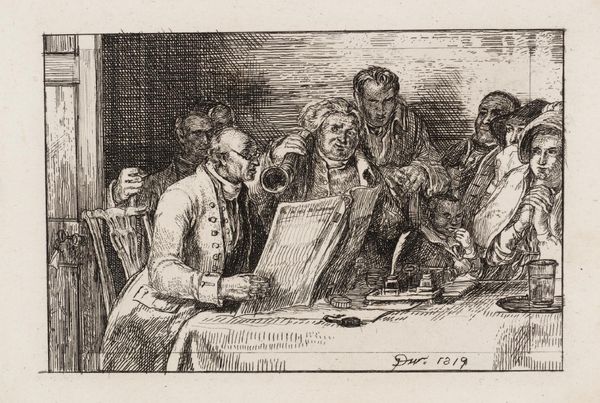
Copyright: Public domain
Curator: This intriguing oil painting, titled "Streik," meaning "The Strike," was completed in 1879 by Theodor Severin Kittelsen. Editor: It has such a shadowy, almost foreboding mood, doesn’t it? The impasto technique makes the figures seem to emerge from the darkness. There’s this palpable tension hanging in the air. Curator: Indeed. Kittelsen, known for his illustrations of Norwegian folklore, uses that shadowy atmosphere to enhance the drama of the scene. This genre-painting depicts a confrontation between laborers and what seems to be a factory owner or manager. Editor: You can almost feel the workers’ collective anxiety and anger. Their presence is looming, particularly against the opulent setting in contrast to their garments. Look at the almost grotesque caricature of the factory owner seated at the table, pipe in mouth— it’s a statement about power dynamics. Curator: Yes, and that contrast emphasizes the burgeoning labor movement in the late 19th century, situating it historically within the rise of industrial capitalism. This era witnessed heightened class tensions, where workers began demanding fair treatment and better wages, challenging established authority. The scene itself takes place perhaps during negotiations. Editor: Precisely. Kittelsen is engaging in social commentary. He forces us to think about who benefits from the system, and at whose expense. This image invites a deep dive into intersectional ideas, looking into class, but also race, gender, location... Were these workers recently displaced people moving to the city for opportunities they were promised? Curator: Exactly. What strikes me further is how the museum context today plays into its meaning, and what role an artwork like this takes in teaching viewers the legacy and political history behind it. The image depicts the political issues in tension during this time, between the wealthy industrialists and the working class. It’s up to each person to make up their mind. Editor: Well, thanks to that history and theory, I’m left thinking not only about the historical context but the work’s contemporary resonance as well. A very affecting piece indeed. Curator: Agreed. Kittelsen’s commentary makes “Streik” all the more compelling, isn’t it?
Comments
No comments
Be the first to comment and join the conversation on the ultimate creative platform.
